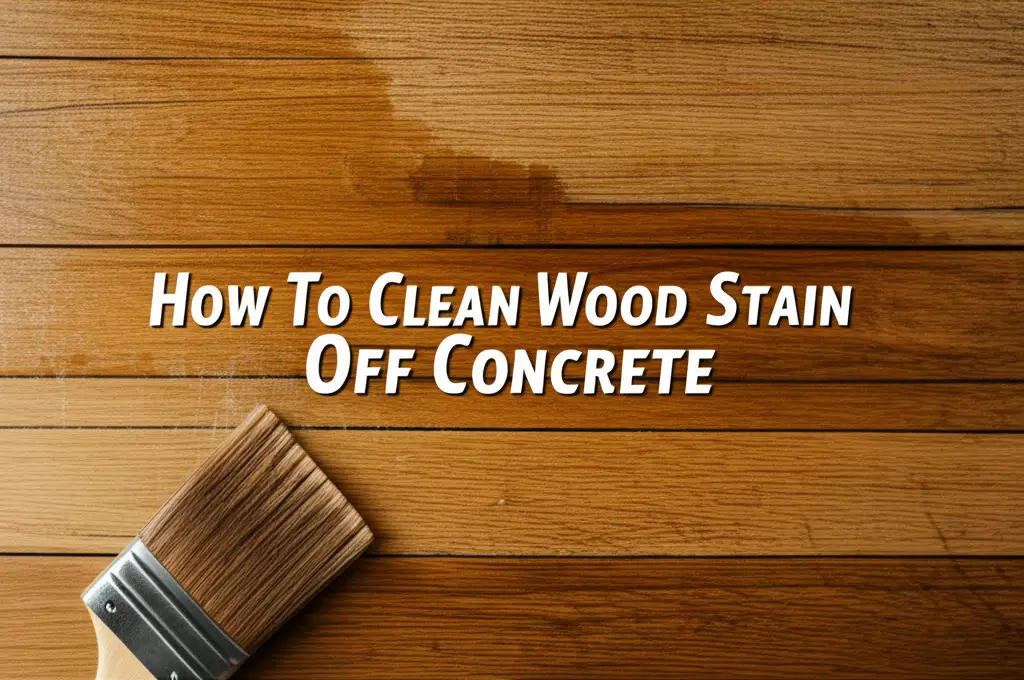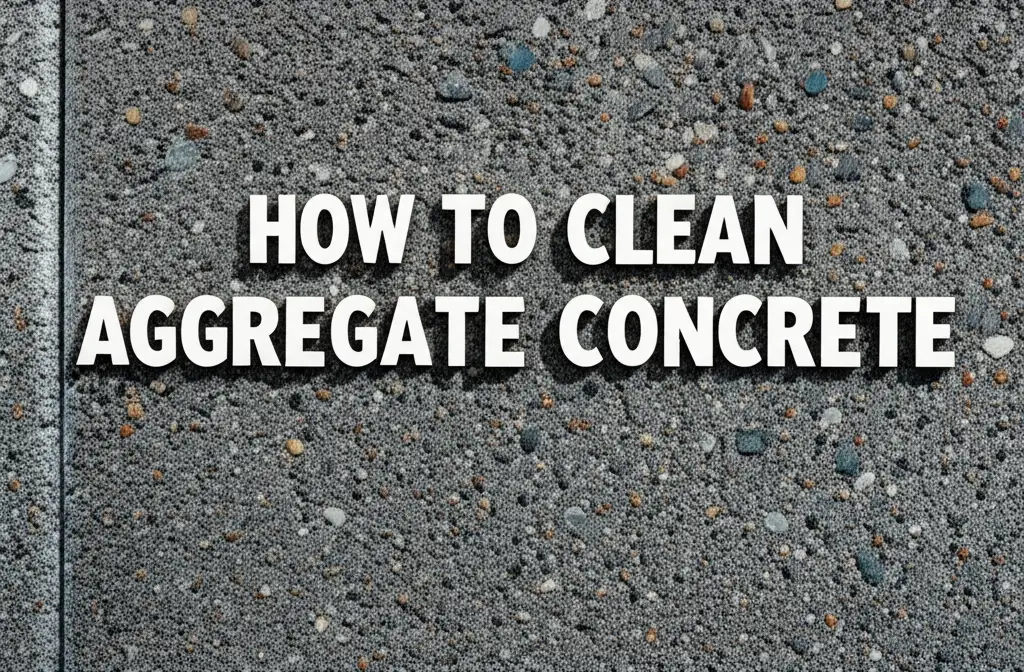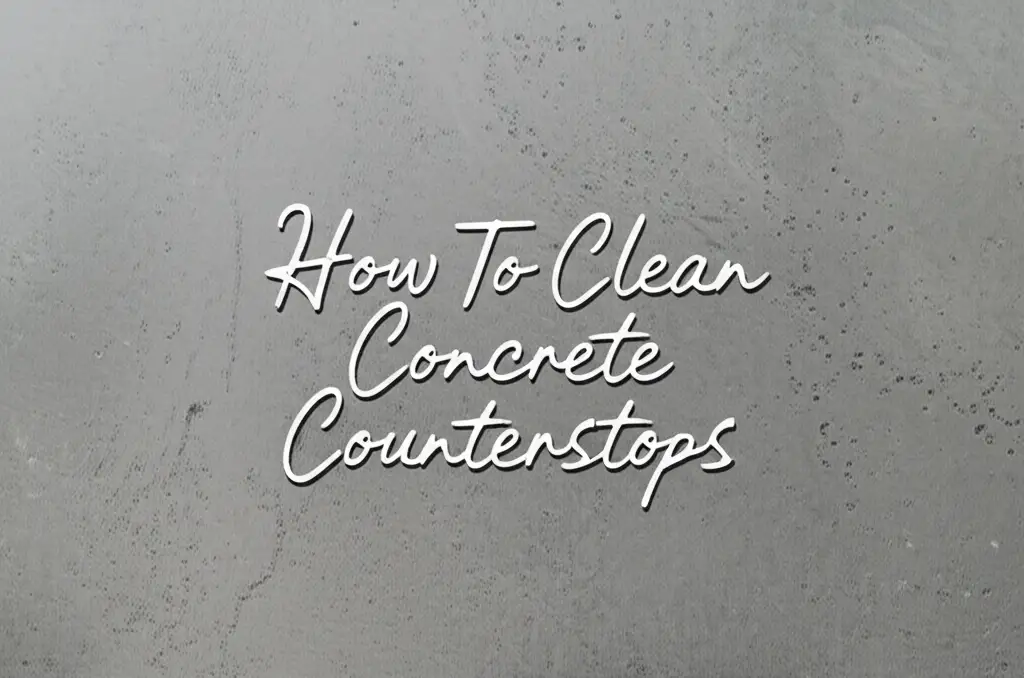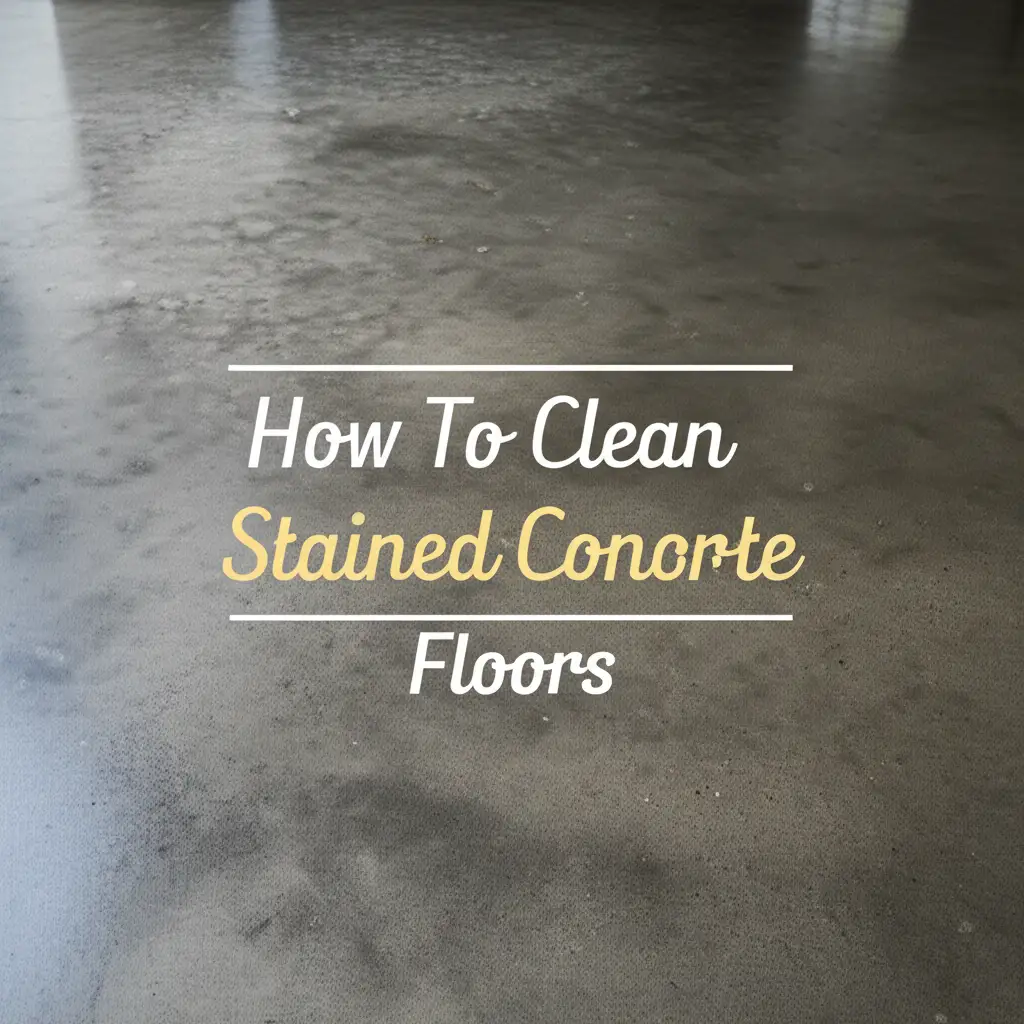· Concrete Care · 12 min read
How To Clean Battery Acid Off Concrete
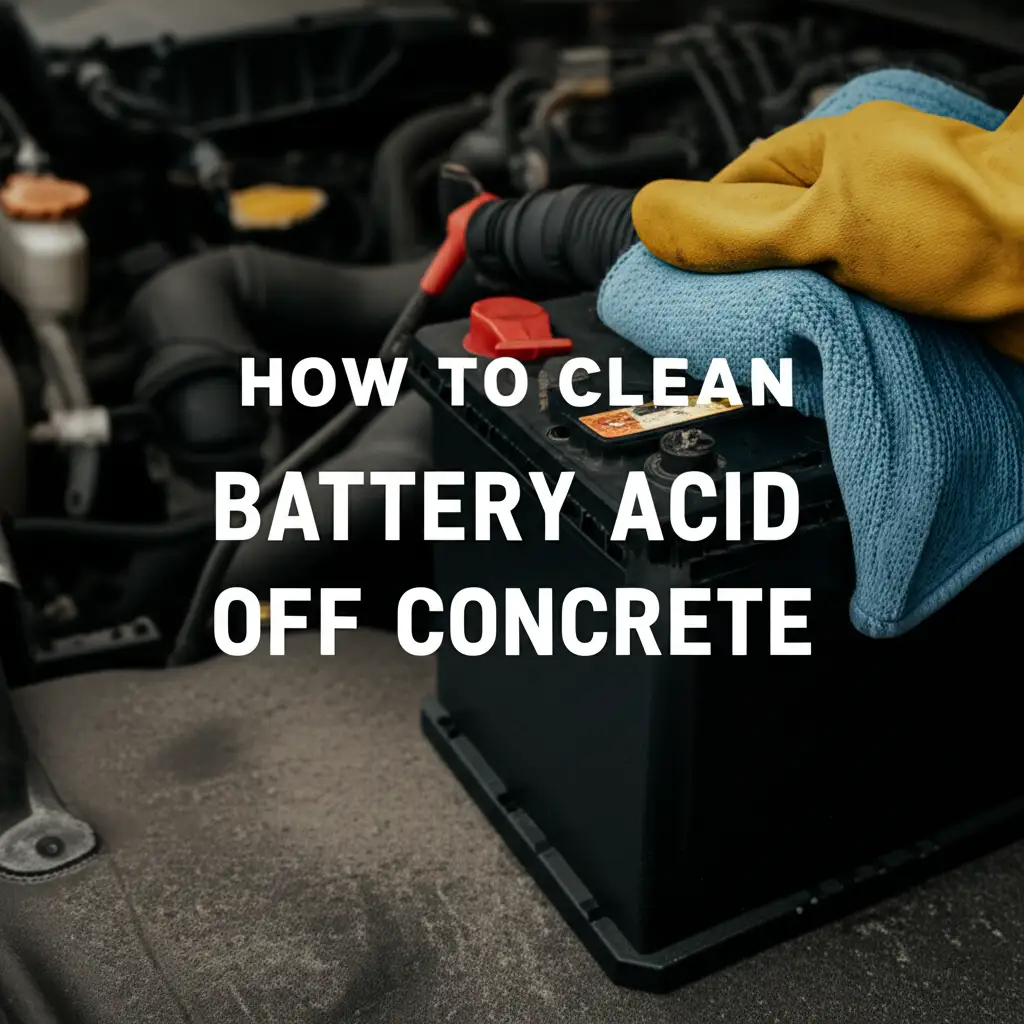
How To Clean Battery Acid Off Concrete
A battery acid spill on concrete is not just an eyesore. It is a corrosive threat to your surfaces and your safety. Car batteries, golf cart batteries, or even household lead-acid batteries can leak, leaving behind hazardous sulfuric acid. This acid quickly eats into concrete, causing discoloration, weakening the material, and creating permanent damage. Knowing how to clean battery acid off concrete quickly and correctly is crucial.
This guide provides a clear plan to handle battery acid spills on concrete. We cover immediate safety measures, neutralization steps, and effective cleaning techniques. We also discuss how to tackle stubborn stains and protect your concrete from future damage. Follow these steps to restore your concrete safely and effectively.
Takeaway:
- Prioritize safety with personal protective equipment.
- Neutralize fresh battery acid immediately using baking soda or kitty litter.
- Clean stains thoroughly after neutralization.
- Act quickly to prevent permanent damage to concrete.
To clean battery acid off concrete, first ensure safety with gloves and eye protection. Then, neutralize the acid immediately with a generous application of baking soda or kitty litter. Allow it to sit, then sweep it up and rinse the area. For lingering stains, use a stiff brush and a mild detergent solution, followed by a thorough rinse.
Understanding Battery Acid and Concrete Interaction
Battery acid is sulfuric acid, a strong chemical. When it spills on concrete, a chemical reaction begins immediately. Concrete contains calcium carbonate, a basic compound. The acid reacts with this, dissolving the concrete’s surface. This reaction can cause bubbling or fizzing.
The damage appears as etching, discoloration, and softening of the concrete. Fresh spills look dark or wet. Over time, the area may turn white or yellowish. If left untreated, the concrete surface will weaken and flake away. This permanent damage makes timely cleaning essential.
The porous nature of concrete allows the acid to penetrate deeply. This deep penetration makes complete removal challenging. Surface cleaning alone often is not enough. The acid continues to react below the visible surface. This reaction creates a lasting weakness in the material.
Understanding this reaction helps you clean effectively. You must neutralize the acid first. Then, you can address the stains and residue. Ignoring the neutralization step risks ongoing damage. It also makes the area dangerous to touch.
Safety First: Essential Precautions for Acid Spills
Handling battery acid requires serious safety measures. Sulfuric acid is corrosive. Direct contact can cause severe burns to skin and eyes. Inhaling fumes can harm your respiratory system. Always put your safety first when cleaning up a spill.
Wear personal protective equipment (PPE). This includes chemical-resistant gloves, such as nitrile or rubber. Use eye protection like safety goggles or a face shield. Protect your skin with long-sleeved shirts and pants. Wear sturdy, chemical-resistant shoes. Do not wear open-toed shoes or shorts.
Ensure good ventilation if the spill is indoors. Open windows and doors. Use fans to direct air away from the spill area. Avoid breathing in any fumes released during the cleaning process. These fumes can irritate your lungs.
Keep children and pets away from the spill site. The area remains dangerous until fully cleaned and neutralized. Have a water source nearby. In case of skin or eye contact, immediately flush the area with plenty of water for at least 15 minutes. Seek medical attention if irritation persists. Safety preparation saves lives and prevents serious injury.
Immediate Steps for Fresh Battery Acid Spills
Acting quickly is vital when battery acid spills. The faster you respond, the less damage occurs to your concrete. Fresh spills are easier to manage than dried ones. Do not delay cleanup once you see the spill.
First, absorb the excess liquid. Use absorbent materials like kitty litter, sand, or old rags. Pour a thick layer directly onto the spill. This helps soak up the acid before it penetrates deeper. Avoid spreading the acid around.
Allow the absorbent material to sit for a few minutes. This gives it time to soak up as much liquid as possible. Gently sweep up the saturated material. Dispose of it properly as hazardous waste. Do not just throw it in your regular trash. Many local waste management facilities have specific guidelines for corrosive materials.
After removing the bulk of the acid, prepare for neutralization. This immediate absorption step reduces the amount of acid. It makes the neutralization process safer and more effective. Remember, speed and safety are your top priorities for fresh spills.
Neutralizing Battery Acid on Concrete
Neutralizing the battery acid is the most important step. Sulfuric acid is a strong acid. It needs a strong base to counteract its corrosive properties. This process stops the chemical reaction with your concrete. It also makes the spill safe to clean up.
Baking soda (sodium bicarbonate) is the best choice for neutralization. It is a common household item and a mild base. Pour a generous amount of baking soda directly onto the remaining acid residue. You will see fizzing and bubbling. This reaction shows the acid is being neutralized.
Mix the baking soda into a thick paste with a small amount of water if the spill is large or widespread. Spread this paste over the entire affected area. The more bubbling you see, the more acid is present. Continue adding baking soda until the fizzing stops. This indicates complete neutralization.
Another option is to use hydrated lime or a commercial acid neutralizer. These are stronger bases. They work similarly to baking soda. Always follow the product instructions for these materials. Once the fizzing stops, let the baking soda or neutralizer sit for several minutes. This ensures the reaction completes. For more on neutralizing agents, you might find this article on how to clean with vinegar and baking soda helpful, especially for understanding pH balancing.
Cleaning and Removing Battery Acid Stains
After neutralization, you can begin cleaning the concrete. The goal now is to remove residue and visible stains. Even neutralized acid leaves behind marks. These marks might look like discoloration or a white residue.
Sweep up the neutralized baking soda or absorbent material. Dispose of it in a sealed container. Use a stiff-bristled brush or broom. This helps dislodge any stubborn residue. For light stains, a simple scrub with water and a mild detergent often works. Mix warm water with a few drops of dish soap.
Pour the soapy water onto the stained area. Scrub vigorously with your brush. Focus on the discolored parts. The detergent helps lift remaining dirt and grime. Rinse the area thoroughly with clean water. A garden hose works well for this step. Make sure all soap residue washes away.
For tougher stains, you might need a stronger cleaner. An enzymatic cleaner designed for concrete can help break down organic components of the stain. Always test any strong cleaner on an inconspicuous area first. This prevents further damage or discoloration. If you are familiar with cleaning strong substances from masonry, similar principles apply to concrete. Consider how you might clean concrete patio without pressure washer for a more gentle approach to rinsing.
Dealing with Old or Dried Battery Acid Stains
Old or dried battery acid stains present a different challenge. The acid has already etched and discolored the concrete. The primary issue is no longer active acid but the damage it caused. Neutralization is still important if any active acid remains. However, the focus shifts to stain removal and surface restoration.
Start by moistening the dried stain with water. This can reactivate any residual acid. Immediately follow with a generous application of baking soda. Let it sit and fizz until all reaction stops. This ensures full neutralization. Sweep up the neutralized material.
For the embedded stain, a poultice can be effective. Mix baking soda with a small amount of hydrogen peroxide to form a thick paste. Apply this paste over the stain. Cover it with plastic wrap and tape the edges down. Let it sit for 12-24 hours. The hydrogen peroxide acts as a mild bleaching agent. It can lift some of the discoloration.
After waiting, scrape off the dried poultice. Rinse the area thoroughly with clean water. You might need to repeat this process several times for deep stains. If stains persist, consider professional concrete cleaning services. They have specialized equipment and chemicals for challenging stains. While battery acid is different from muriatic acid, understanding how professionals handle strong substances for cleaning can be helpful, for example when considering how to clean brick with muriatic acid.
Preventing Future Battery Acid Spills on Concrete
Preventing battery acid spills is far better than cleaning them. Proactive measures protect your concrete and maintain safety. A few simple habits can make a big difference. These steps can save you time, effort, and money in the long run.
Inspect your batteries regularly. Look for any signs of leakage, corrosion around the terminals, or bulging casings. If you notice these issues, replace the battery promptly. Do not wait for a full spill to occur. This applies to car batteries, deep cycle batteries, and even smaller ones.
Use battery trays or mats under batteries stored on concrete. These trays catch any drips or leaks. They create a protective barrier between the battery and the concrete surface. Many automotive stores sell acid-resistant battery trays. They are an inexpensive and effective solution.
Store batteries in well-ventilated areas. Extreme temperatures can affect battery performance and increase the risk of leaks. Keep batteries upright and secure them to prevent tipping. Accidental knocks can damage the casing and lead to spills. If you are cleaning other concrete areas, such as after an unfortunate event, remember similar precautions, as discussed in articles about how to clean concrete basement floor after a flood. Proper maintenance and storage prevent dangerous spills.
Protecting Your Concrete After Cleaning
After successfully cleaning battery acid from concrete, protecting the surface is important. The acid may have etched the concrete, leaving it more porous. This makes it vulnerable to future damage and stains. Proper sealing can help restore its resistance.
Allow the cleaned concrete area to dry completely. This might take several days, depending on humidity and ventilation. Applying a sealant to wet concrete can trap moisture. This leads to issues like hazing or poor adhesion. Ensure the surface is free of any lingering residue or dust.
Apply a high-quality concrete sealer. Acrylic or epoxy sealers are good choices for garage floors or outdoor concrete. These sealers create a protective barrier. This barrier repels water, oil, and other chemicals. It also makes future spills easier to clean. Follow the manufacturer’s instructions for application. Many sealers require multiple thin coats.
Regular maintenance also helps. Sweep your concrete regularly to remove loose debris. Promptly clean up any new spills, no matter how small. A well-maintained and sealed concrete surface will resist damage for many years. This proactive approach saves you from dealing with major issues down the line.
FAQ Section
How quickly does battery acid damage concrete?
Battery acid begins damaging concrete almost immediately upon contact. Sulfuric acid reacts with the calcium compounds in concrete. This reaction causes etching, discoloration, and material breakdown. The longer the acid sits, the deeper the penetration and the more severe the permanent damage. Fast neutralization is essential to minimize harm.
Can baking soda remove battery acid stains completely?
Baking soda neutralizes the acid, stopping its corrosive action. While it prevents further damage, it does not always completely remove existing stains. Neutralization is the first critical step. For lingering discoloration, you may need additional cleaning methods like scrubbing with detergent, using a hydrogen peroxide poultice, or specialized concrete cleaners.
What should I do if battery acid gets on my skin?
If battery acid contacts your skin, immediately flush the affected area with large amounts of cool running water for at least 15 minutes. Remove any contaminated clothing. Seek medical attention promptly, especially if burns or irritation persist. Do not try to neutralize it on your skin with baking soda, as the heat from the reaction can cause further burns.
Is muriatic acid safe to use on concrete stains?
Muriatic acid is a strong acid often used to clean concrete or etch it for sealing. However, it is extremely dangerous and can cause severe burns. Using muriatic acid on battery acid stains is not recommended. It can worsen the etching and create hazardous fumes. Always use a basic substance like baking soda to neutralize battery acid first.
How can I prevent battery acid from spilling again?
To prevent future spills, regularly inspect batteries for leaks or corrosion. Use acid-resistant battery trays or mats under batteries stored on concrete surfaces. Ensure batteries are stable and not prone to tipping. Store batteries in well-ventilated areas, away from extreme temperatures. These steps reduce the risk of accidental spills.
What are the signs of permanent concrete damage from battery acid?
Signs of permanent damage include deep etching, significant surface pitting, or flaking of the concrete. The affected area may also show irreversible discoloration, often white, yellow, or dark gray. If the concrete feels soft or crumbles easily, the acid has severely degraded its structure. These areas may require professional repair or resurfacing.
Conclusion
Cleaning battery acid from concrete requires a swift and careful approach. It is not just about aesthetics; it is about safety and preserving your property. We covered the necessary steps, from understanding acid’s impact to post-cleanup protection. Always prioritize safety with proper personal protective equipment.
Remember to neutralize fresh spills immediately using a generous amount of baking soda. This critical step stops the corrosive action. Follow this with thorough cleaning to remove residue and stains. For older, stubborn stains, a poultice can help. Finally, prevent future problems by regularly checking batteries and using protective measures like battery trays. By following these guidelines, you can effectively clean battery acid off concrete and maintain your surfaces. Take action today to protect your concrete from further damage.
- battery acid cleanup
- concrete acid stain
- acid neutralization
- garage floor cleaning
- concrete care

